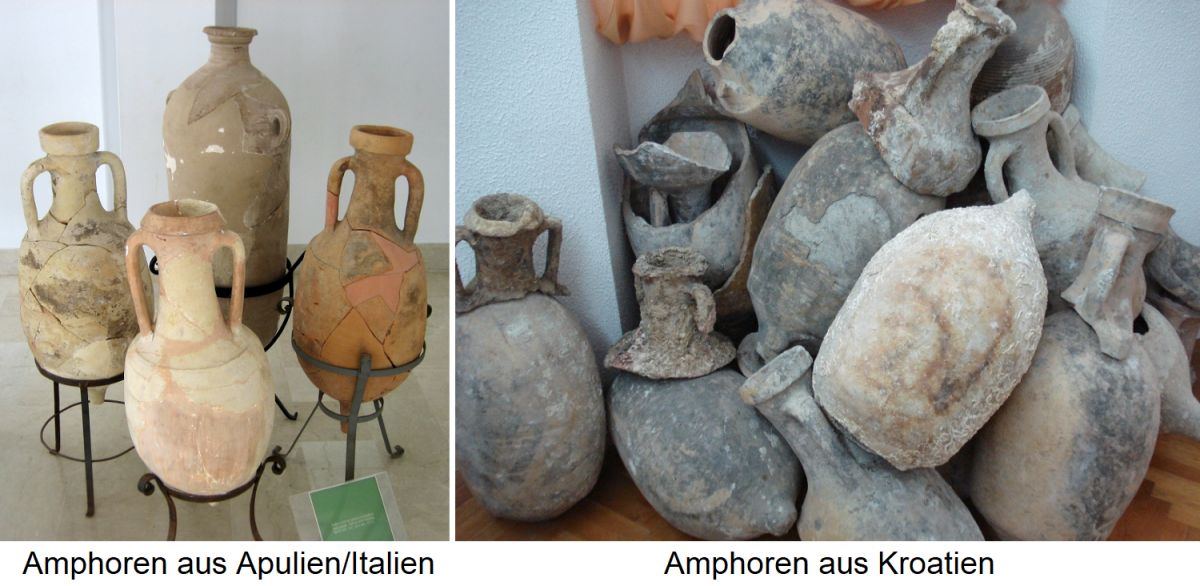Vessel made of clay, earthenware, bronze and, more rarely, glass. The Greek name "amphora" derives from the fact that the vessel could be "carried by two handles" ("amphi" = "to carry by two handles" and "phéro" = "to carry"). This was done by two people for larger volumes. Amphorae were probably invented by the Canaanites, the ancestors of the Phoenicians, and brought to Egypt in 1500 BC. They developed into the most popular vessel in antiquity, used for liquids of all kinds, especially oil or wine. It was brought as far as China by the Greeks.

Nature
The classical wine amphora was a bulbous clay vessel with two handles on a narrow neck and a pointed base. Amphorae usually did not have a foot, so that they could not be placed on their own, usually without a three-legged stand, but were also stored lying down or hung up by their handles. They were also often used for transport by ship, for which purpose they were stuck into a thick layer of sand with the tapering lower part in order to fix them in place. There were various forms (see below), including the Attic pelike (also stamnos) with a fixed base and short neck, which was mainly used for storing and transporting wine and oil, but also as an urn for storing ashes in tombs. Small amphorae for ointments, perfumes or fragrances were called amphoriscos.
Voices of our members

In the past, you needed a wealth of encyclopaedias and specialist literature to keep up to date in your vinophile professional life. Today, Wine lexicon from wein.plus is one of my best helpers and can rightly be called the "bible of wine knowledge".
Prof. Dr. Walter Kutscher
Lehrgangsleiter Sommelierausbildung WIFI-Wien